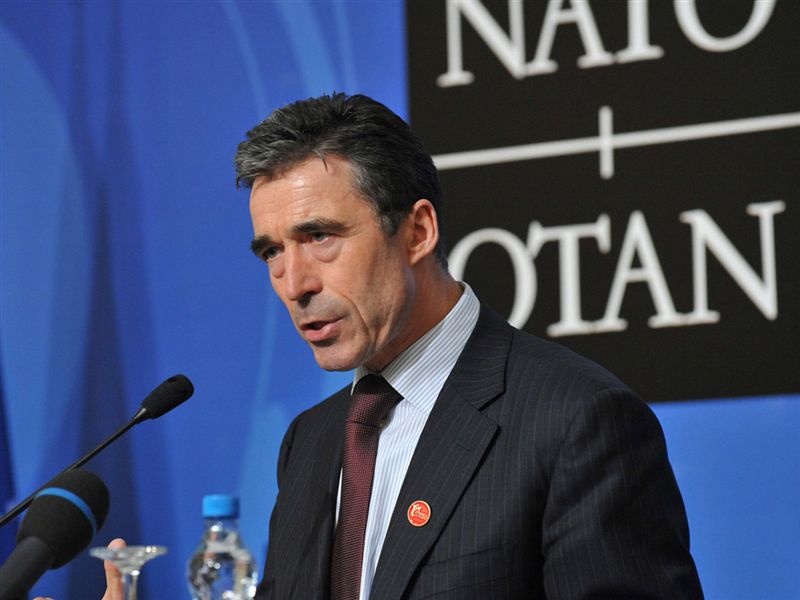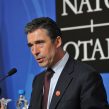
New Russian Military Doctrine Opposes NATO Enlargement
Publication: Eurasia Daily Monitor Volume: 7 Issue: 27
By:

After several delays, the long-awaited new Russian military doctrine was finally approved by President Dmitry Medvedev on February 5. The document did not include the rumored lowering of the nuclear threshold, despite recent public comments on the issue to the contrary made by the Secretary and Deputy Secretary respectively of the Security Council, Nikolai Patrushev and Yuri Baluyevskiy (EDM, February 8). However, it defined NATO’s eastward enlargement as the main external military danger facing Russia: “The efforts to impart global functions, which are implemented in violation of the norms of international law, to the force potential of the North-Atlantic Treaty Organization (NATO), bring the military infrastructure of NATO member countries closer to the Russian borders, including by way of the bloc’s enlargement,” adding that US ballistic missile defense plans might undermine global stability, as well as referring to the militarization of space and the deployment of non-nuclear high-precision weapons. “Territorial claims to the Russian Federation and its allies, as well as interference in their internal affairs,” are also listed among military threats to Russia. These threats appear to be growing, linked to the proliferation of weapons of mass destruction (WMD), missiles and missile technology (www.kremlin.ru, February 5).
The doctrine lists multiple potential threats to Russian security, ranging from states building up their military deployments in close proximity to Russia and attempts to use violence to change the constitutional order in the country, or violate its sovereignty and territorial integrity. Reference is made to illegal armed groups operating on its territory (in the North Caucasus) while the potential for regional conflict is highlighted. Some of Russia’s neighbors are described, without identifying them, who apparently demonstrate military force capabilities during exercises close to the Russian border, and other states with either partial or full mobilization. The implication is that Russia is surrounded by potentially hostile powers and its leadership is aware of the risk posed by “frozen conflicts,” where some actors might choose to use force to resolve these disputes. “The existing international security structure, including its international law mechanism, does not provide equal security for all states,” clearly underscoring the need for other states to take seriously Medvedev’s European security initiative (www.kremlin.ru, February 5).
Ruslan Pukhov, the Director of the Moscow-based Center for Analysis of Strategies and Technologies (CAST), regards the new doctrine as realistic and not provocative: “We never know how the world will look like in ten years. There are several states that claim part of Russia’s territory to be their national territory –for instance, Japan. Also, the border has not been demarked with some of Russia’s neighbors, so we cannot exclude that an international alliance might use armed force against Russia.” Other Russian analysts, such as Alexander Nikitin, the Director of the Center for Euro-Atlantic Security of the Moscow State Institute of International Relations, highlight the future risk posed to Russia by instability in Afghanistan and Pakistan (Russia Today, February 5)
In terms of its conventional forces posture, the doctrine outlines the priorities for their future development. This includes maintaining the ratio between permanent readiness formation formed in 2009 and the reserve, improving the quality of combat training as well as refining cooperation between the branches and arms of service, which was exposed as an enduring weakness during the Russia-Georgia war in August 2008. It also states that the supply of modern military hardware and weapons must be ensured, as the armed forces are modernized (www.kremlin.ru, February 5). This element only makes sense when read against the background of the ongoing military reform, though there are elements and aims of the reform that remain more opaque. It makes provision for peace support and other types of conflict resolution through the Collective Security Treaty Organization (CSTO) and its newly formed Collective Operational Reaction Forces (CORF), and potential future participation in operations with a UN mandate.
Viktor Zavarzin, the Head of the State Duma Defense Committee explained the key political driving force underlying Russian defense reform, referring to the military doctrine, saying that enhancing the country’s military capabilities was the only way to prevent NATO expansion and deal with other security threats. Zavarzin noted the potential enlargement of the Alliance and the growth of its interests, combined with threats stemming from the proliferation of extremism and terrorism as necessitating its military buildup to protect the country’s territorial integrity (ITAR-TASS, February 6).
The new doctrine declares Russia’s right to use military force beyond its borders “for the purpose of the protection of the interests of the Russian Federation and its citizens, as well as the maintenance of international peace and security.” Downplaying the provision, which President Medvedev had previously signed into law, Pukhov stressed that the US and France also reserve the right to protect their citizens abroad, and asked, “why should Russia not do the same?”
Moreover, the doctrine prioritizes Russian international military cooperation, and lists these in order of importance:
1. Belarus: promoting interoperability and the Union State.
2. CSTO: consolidating collective defense and strengthening joint military forces.
3. CIS: ensuring regional and international security, with an emphasis on peacekeeping operations.
4. Shanghai Cooperation Organization (SCO): consolidating efforts to confront emerging threats.
5. United Nations and other international, including regional, organizations: mainly in relation to peacekeeping (www.kremlin.ru, February 5).
On February 6, during an interview on the sidelines of the 46th Munich Security Policy Conference, the NATO Secretary-General Anders Fogh Rasmussen criticized several aspects of the new Russian military doctrine. He singled out the negative depiction of NATO enlargement, which he emphasized, contradicted existing efforts to improve NATO-Russia relations and did not reflect reality (ITAR-TASS, February 7).
President Barack Obama’s “reset” policy vis-à-vis Russia faces longer-term challenges, particularly in relation to the issue of NATO enlargement. The new Russian military doctrine defining NATO enlargement as the main external military danger confronting the country is unsurprising; it confirms the anti-NATO trend in Russian security documents that has developed since 1993. Advocates of the reset must now hope that the doctrine turns out to be a PR exercise, rather than reflecting dogma: otherwise future NATO-Russia relations will depend on the willingness of the Alliance to abandon its enlargement commitment given to Georgia and Ukraine in Bucharest in April 2008.




